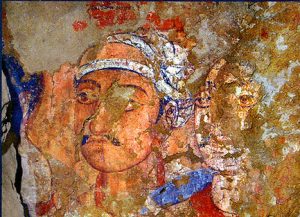
Sangeeta Bansal Ph.D, a researcher and writer, is also the founder of a non-profit called Mindside, which aims to make the benefits of mindfulness meditation available to all. Mindside offers an eight-week curriculum that teaches mindfulness practices which have shown to bring about transformative change, from stress reduction, pain management, freedom from addiction and more. The program is offered to all age groups and all religious backgrounds. She can be reached at [email protected].
1. Seeing Things Clearly
One evening, a group of friends and I sat down for dinner with Barry Kerzin (a veteran monk and medical doctor to the Dalai Lama) on one of his visits to Hong Kong. I asked him how one gets rid of sense cravings. He gave me a very simple example that still resonates with me. He recounted how he used to have a craving for ice cream (which I do too!). He wanted to eat ice cream everyday. He realized he was hopelessly addicted and wanted to reverse his deeply ingrained habit. The way he did it was to break the ice cream down to its individual constituents – fat, sugar, milk, and chemical flavorings. He visualized how each of these went down his alimentary canal (in large portions) and harmed his body and cells. He meditated on how unattractive the components really were if one sees them in their original form. After he did this for a few days, ice cream lost its hold on him.
Deceptively simple, this is in fact a powerful meditation technique that aims to create in the mind an opposite tendency to the one that is arising. It is based on one of the Buddha’s profound teachings that aims to “see things as they really are” and realize that they are devoid of intrinsic existence. It requires a radical reorientation of perception, as we are naturally programmed to see things in one way, and great strength to swim against the tide of sensory pleasures. When something provides temporary pleasure, we tend to want more of it. By the time we figure out that this is harmful, it’s too late – the brain is hooked. This kind of meditation and visualization is retraining the brain to remember that the object is not intrinsically desirable.
As per Buddhist philosophy, the root of all afflictive and destructive emotions (of which craving and addiction is just one) is ignorance. Ignorance is “not just lack of knowledge – it is an active misapprehension of the nature of things. It mistakenly assumes that people and things exist in and of themselves, by way of their very nature” (Dalai Lama, How to See Yourself as You Really Are, p. 29).
In addiction, we see in the object some inherent “joy” – and by embracing that object we can partake in its joyful nature. But in reality, that object is nothing but a conglomeration of certain molecules. It is our thought superimposed on that object that makes it so desirable. We assign and attribute qualities to the object, making ourselves weak and vulnerable to it. No doubt that a smoke can give great pleasure to a smoker, because of the associations in his thought process that would be perceived as disgusting to a non-smoker. The joy is not an inherent characteristic of the cigarette: “Identifying this false appearance of things and acknowledging our tacit assent to this illusion are the first steps towards realizing that you and other beings, as well as all other objects, do not exist the way they appear to; they do not exist so concretely and autonomously” (ibid, p. 30).
In spite of the profundity of this teaching, the person caught in the midst of an addiction may need more practical solutions to throw out that cigarette packet, or pour the vodka down the drain, or walk away from the casino or binge shopping session.
2. Pharmaceutical Intervention
While a pharmaceutical intervention may be a great solution for some people, one should be careful before rushing into it. One problem with this approach is that it doesn’t address the underlying question of why some people get addicted and others do not. Not all teenagers who experiment with smoking and alcohol get addicted, yet some do.
It could be that the potential addict has had particularly trying circumstances or a mental propensity to get addicted. The unhappiness experienced by the subject can be cognitively dealt with before we embark on an aggressive medication treatment. Adding more chemicals to the brain should be a last resort. As Crain acknowledges,
“With the increased recognition of addiction as a brain disease, the medical community is rapidly attempting to develop pharmaceutical treatments. However, the primary focus of these drug programs has been on opiate addiction, which typically rely on providing more opiate drugs, such as methadone and Suboxone, thereby perpetuating brain dysfunction rather than restoring healthy balance to the stress and reward circuits.”
3. Cultivating and Expanding Awareness
Breaking something as hard as an addiction requires strong antidotes. Just like skilled diamond cutters can cut a diamond with a diamond, one must break the stronghold of desire with desire. Even though it’s the hardest substance, a diamond has specific weak points in its structure, lines of cleavage, which when struck accurately, can split it into pieces. Similarly, the chain of desire has to be broken at the place where there is a weak link.
According to Kulananda and Houlder (Mindfulness and Money p. 51), one has to work in the gap between feeling and craving. While feelings are simple responses to sensations, we have to prevent them from getting charged with negative or positive emotions. We have to learn how to stay with the simple feeling, and not get caught up in the complex emotion which has desire and craving mixed in it. Practitioners of mindfulness meditation are able to cultivate a higher degree of awareness that enlarges the gap between feeling and craving. This gives them a moment of choice, and they can choose to act skillfully and maneuver themselves away from danger.
A) Intervention before craving arises: One has to be very vigilant of triggers that can set off the addiction. This awareness can be developed by practicing shamatha or calm abiding meditation. When thoughts settle down, one is more able to see the arising of a craving and nip it in the bud. The meta-cognition and awareness about one’s own thought process is crucial for becoming aware of these trigger mechanisms. Once recognized, one should stay clear of any contact with that object. The misery experienced in prior incidents serves as a reminder and motivation to avoid the “sparks”.
One other measure is a type of mindfulness meditation and has the acronym RAIN. This meditation can be used to become aware and dispel all the components of craving. Recognize when craving arises and what that feels like, allow it to be there, investigate its impact on mind and body and note how the craving waxes and wanes. This is also known in the psychology literature as Urge Surfing – or riding the waves of your urges, not pushing them away and not succumbing to them. Just observing the craving and not feeding it helps to weaken it whereas acting on it helps to strengthen it.
B) Intervention during craving: Under a full-blown attack, the type of meditation practice that is recommended involves the application of a direct antidote, which is creating a mental state opposite to the one we are struggling with. One has to meditate on the undesirable aspects of the object of craving. For lust, the Dalai Lama offers a meditation as follows:
“If your predominant destructive emotion is lust…you can meditate on the components of your body from the top of your head to the soles of your feet – skin, flesh, blood, bone, marrow, urine, feces, and so forth. Seen superficially, the body might be considered beautiful, but if you closely consider its parts for the purposes of this exercise, it is not so beautiful. An eyeball alone can be frightening”
(The Dalai Lama, How to see Yourself as You Really Are, p. 97).
C) Intervention after craving subsides: In order to eradicate the affliction completely, sustained efforts have to be made even after initial success. These are strong mental patterns that can resurface frequently. One has to create a critical distance from the object of awareness in one’s consciousness, and meditate on its lack of intrinsic existence. One stays mindful of the Buddha’s teachings on dependent origination; that we can break the cycle by not acting upon the impulse and by avoiding contact with the object of addiction. It also helps to investigate alternate sources of pleasure that are beneficial for the mind and body. For example, smokers can try to do a mindful nature walk, alcohol addicts may try to go to the movies instead of to a bar, or one may try a new hobby like music or dance or yoga to release pent up energy.
As Kulananda and Houlder point out, we choose to crave, it doesn’t just happen to us. Practicing meditation is the safest and most long-term solution to rooting out craving and addiction from its source. When coupled with an understanding of the teachings that form the basis of these meditations, these meditations can reverse the tide of clinging and the suffering associated with it.
Craving (Part 1): The ‘Double Dukkha’ of Craving and Addiction
REFERENCES
His Holiness the Dalai Lama (2006). How To See Yourself As Your Really Are. Simon and Schuster, New York
Kulananda and Dominic Houlder, 2002. Mindfulness and Money: The Buddhist Path to Abundance. Random House, New York






